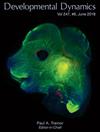Streamlining asymmetry quantification in fetal mouse imaging: A semi-automated pipeline supported by expert guidance
Abstract
Background
Asymmetry is a key feature of numerous developmental disorders and in phenotypic screens is often used as a readout for environmental or genetic perturbations. A better understanding of the genetic basis of asymmetry and its relationship to disease susceptibility will help unravel the complex genetic and environmental factors and their interactions that increase risk in a range of developmental disorders. Large-scale imaging datasets offer opportunities to work with sample sizes necessary to detect and quantify differences in morphology beyond severe deformities but also pose challenges to manual phenotyping protocols.
Results
We introduce a tool for quantifying asymmetry in 3D images and apply it to explore the role of genes contributing to abnormal asymmetry by deep phenotyping 3D fetal microCT images from knockout strains acquired as part of the Knockout Mouse Phenotyping Program. Four knockout strains: Ccdc186, Acvr2a, Nhlh1, and Fam20c were identified with highly significant asymmetry in craniofacial regions, making them good candidates for further analysis.
Conclusion
In this work, we demonstrate an open-source, semi-automated tool to quantify the asymmetry of craniofacial structures that integrates expert anatomical knowledge. This tool can detect abnormally asymmetric phenotypes in fetal mice to explore the relationship between facial asymmetry, perturbed development, and developmental instability.




 求助内容:
求助内容: 应助结果提醒方式:
应助结果提醒方式:


